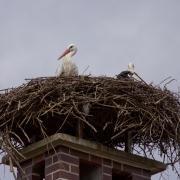Five Signs Your Chimney Needs Repair
If you have gas insert, a pellet stove, or a wood-burning stove in your home, you may not think much about maintenance. On a day-to-day basis, there isn’t much that needs to be done, especially with more modern models that burn fuel efficiently. However, like any other part of the house, chimneys can suffer damage, especially if your house is older.
When your chimney is not functioning properly, your indoor air quality, fuel efficiency, and heat output can suffer. Look for these telltale signs that point to the need for a professional inspection.
Crumbling Bricks or Mortar Joints
In older homes that have brick chimneys, broken or cracked mortar is a common problem that can go unnoticed. Some chimneys are finished over with plaster or drywall, so the exposed brick isn’t open for inspection. However, you can still look in closets or in the attic for uncovered chimney brick.
If you noticed the mortar is breaking or if the bricks themselves are crumbling, call for help. You don’t want the structural integrity of your chimney to be compromised.
If the exterior brick is showing wear, the damage could also point to interior problems like cracking in the flue lining or excess moisture that causes the bricks to expand and contract during temperature changes.
Be sure you’re on the lookout for spalling. Spalling is when some bricks seem to be bulging out of place. If you have a stone or tile fireplace, these materials could crack or fall off as well. Usually, spalling occurs when water enters the structure and the residual salts force the masonry out of place.
Rust
Rust is an issue no matter what type of chimney you have or how old it is. Steel flu liners can rust, and you’ll start to see rust on the damper itself. If your damper is starting to get hard to move or if you are noticing the firebox isn’t sealing like it used to, rust is the most likely culprit. You should ideally never see rust on the interior or exterior of the firebox.
Rust means that water is somehow leaking down into the chimney. Left without repair, the rust will eventually cause metal failure in the system. Early rust is easy to repair, but once rust begins to scale, the problem becomes more costly to resolve because you’ll likely need to replace damaged elements.
Flue Tile Pieces
While more people choose metal liners or poured concrete liners for their chimney, flue tiles are still in use and are still effective for keeping your chimney safe. However, you should not find broken or flaked tile pieces at the bottom of the flue. This is a sign that your flue tiles are failing, and as a result, you should not use your fireplace until it is repaired.
Your flue liner is what helps to keep the combustion gases and the heat of the fire contained. Without it, you have a greater buildup of creosote, a greater risk of chimney fire, and your exterior masonry (rock, brick, or concrete) wears down more quickly.
If you notice flue tile pieces, try not to use your fire until you get the flue inspected. Sometimes, flue tiles can be repaired, but often the repair process is cost prohibitive. You may need a replacement liner to make your chimney safe again.
Wall Damage
Your chimney itself is not the only area where you might see damage. Every so often, check the walls around your fireplace. They should be smooth, dry, and mold free. If you have wallpaper, the paper should maintain a flat finish.
If you notice any soft spots in the wall, any bubbling up under paint or wallpaper, or any discoloration, have your chimney checked for moisture leaks. A damaged chimney cap can allow rainwater into the house, causing the moisture damage to the areas surrounding the immediate structure.
Buildup
Buildup within a chimney isn’t damage, but if left alone, it can cause damage to your home and reduce the effectiveness of your fire. You should have your chimneys cleaned seasonally to remove creosote, a highly flammable deposit that clings to the flue liner and gradually reduces the space of the chimney opening.
Blockages can also occur from birds or garbage that get trapped in the flue. If you notice that your fire isn’t burning very hot, if your home is smoky, or if you’re unable to keep the flame going, check for blockages and build up.
Left alone, creosote buildup can cause chimney fires and burn at a heat high enough to ruin your flue liner and damage the structure of your chimney and your roof.






